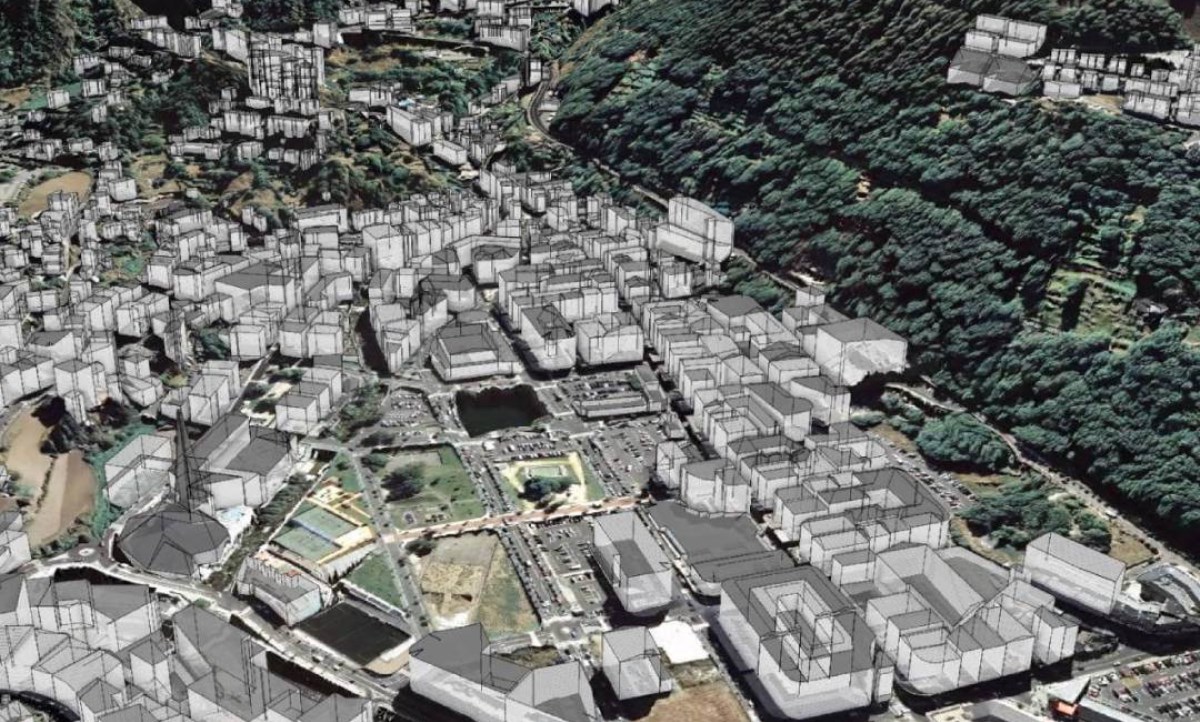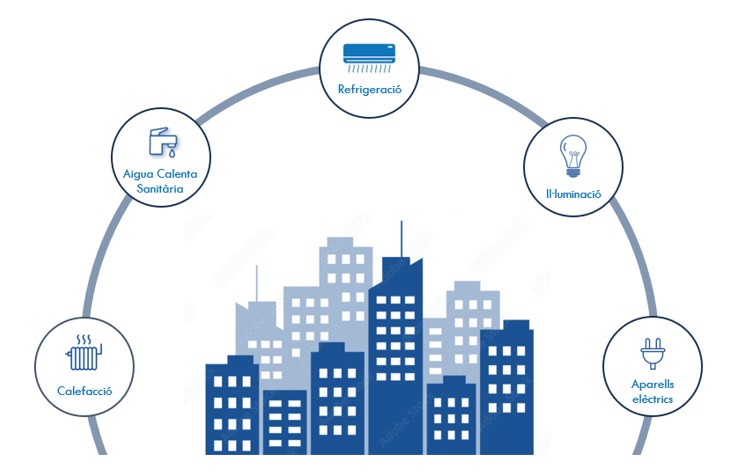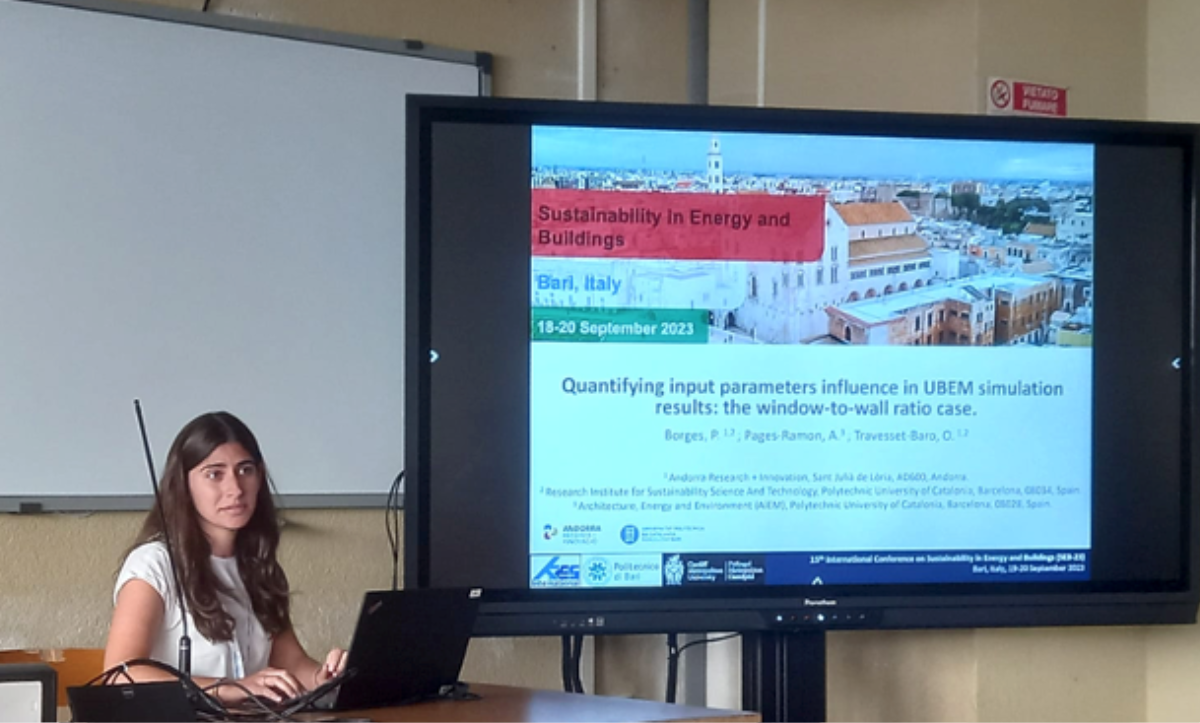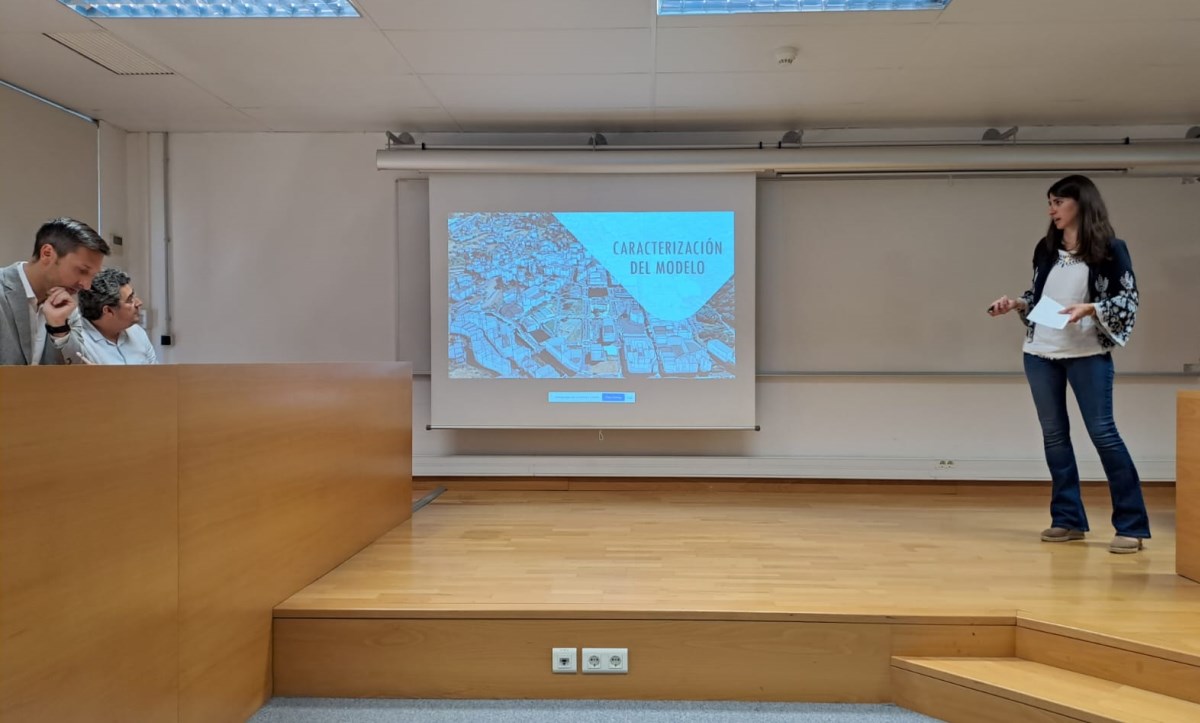Projects

EnergiAnd characterises the energy system of the residential building stock of Escaldes-Engordany with a high level of technological detail, while geolocating the main energy consumers in parallel with future potential generation installations (such as photovoltaic solar energy systems, for example). The analysis is carried out using an Urban Building Energy Model (UBEM), a type of bottom-up model specifically designed to understand the spatio-temporal patterns of energy use in urban areas [1]. The implementation of the UBEM has generally followed the methodology described in [2], which is divided into three stages: (1) characterisation, (2) generation, and (3) simulation and validation.

This project has devoted considerable effort to the characterisation stage, providing a new methodology to obtain representative residential building archetypes of the building stock using metered electricity consumption data [3], [4]. In parallel, and with the aim of characterising the different energy uses of the case study dwellings, as well as user behaviour, an on-site survey of 294 buildings was carried out [5].

This model allows the identification of the current energy consumption of the residential building stock in Escaldes-Engordany, and facilitates the analysis of individual savings potential of each building through the implementation of energy efficiency measures, allowing the exploration of the challenges and opportunities of moving to an energy model based on distributed generation, demand management tools and district heating networks.
Below are links of interest to various tools generated during the course of the project:
- TMY file generator for Andorra. Script to read, generate statistics, and modify imported .epw files from PVGIS5
- LoD2 of Escaldes-Engordany. 3D model of Escaldes-Engordany generated from cadastral and LiDAR data
- Residential Building Energy Consumption Survey (ECEER). Access to the energy survey designed to collect data on the different energy uses of residential buildings
- ECEER responses. Interactive viewer displaying the surveyed buildings and the most significant survey responses
- Simulation results. Interactive viewer showing the simulation results at the building scale, and the UBEM characterisation results
The project “EnergiAnd, promoting the energy transition” [5] has been funded by the Government of Andorra in the framework of the Research or Transfer Grant that can be applied in Andorra, in accordance with the principles promoted by the ActuaTech Foundation (APTA0014-AND / 2017) and has been carried out in collaboration with the Universitat Politècnica de Catalunya.
The PhD thesis 'Energy Modeling of Buildings at an Urban Scale in Andorra: Reducing Model Discrepancies Using Disaggregated Energy Consumption Data' [7] is also one of the major contributions of the project.
[1] C. F. Reinhart and C. Cerezo Davila, “Urban building energy modeling - A review of a nascent field”, Building and Environment, vol. 97, pp. 196–202, 2016.
[2] C. Cerezo Davila, C. F. Reinhart, and J. L. Bemis, “Modeling Boston: A workflow for the efficient generation and maintenance of urban building energy models from existing geospatial datasets,” Energy, vol. 117, pp. 237–250, 2016, doi: 10.1016/j.energy.2016.10.057.
[3] M. P. Guillaumet, P. Borges, M. Rosas-Casals, and O. Travesset-Baro, “Building archetypes in urban energy models. A comparative case study of deterministic and statistical methods in Andorra,” in uSIM 2018 - Urban Energy Simulation, 2018.
[4] P. Borges, O. Travesset-Baro, and A. Pages-Ramon, “Hybrid approach to representative building archetypes development for urban models – A case study in Andorra,” Build. Environ., vol. 215, no. February, p. 108958, 2022, doi: 10.1016/j.buildenv.2022.108958.
[5] P. Borges, A. Pages-Ramon, and O. Travesset-Baro, “Modelización energética del parque edificado a escala urbana: encuestas como complemento a los datos catastrales en la fase de caracterización,” CienciAmérica, vol. 10, no. 3, p. 41, Oct. 2021.
[6] OBSA, “EnergiAnd- Impulsant la transició energètica. Memòria final del projecte,” 2020.
[7] P. Borges, “Modelització energètica d’edificis a escala urbana a Andorra. Reducció dels desajustos dels models mitjançant dades de consum d’energia desagregades,” Universitat Politècnica de Catalunya, 2023.

 Oriol Travesset
Oriol Travesset Patricia Borges
Patricia Borges Paula Guillaumet
Paula Guillaumet
